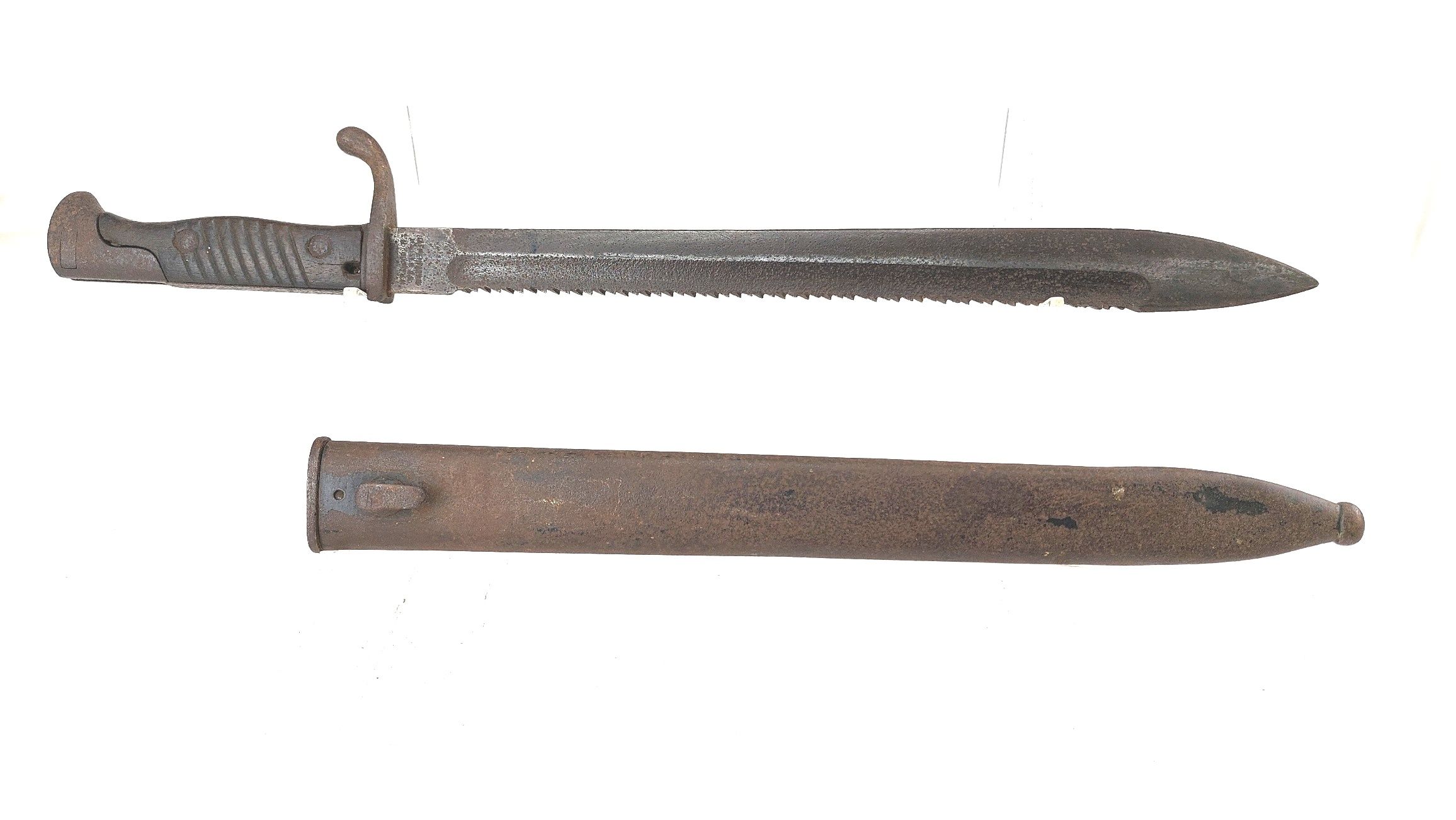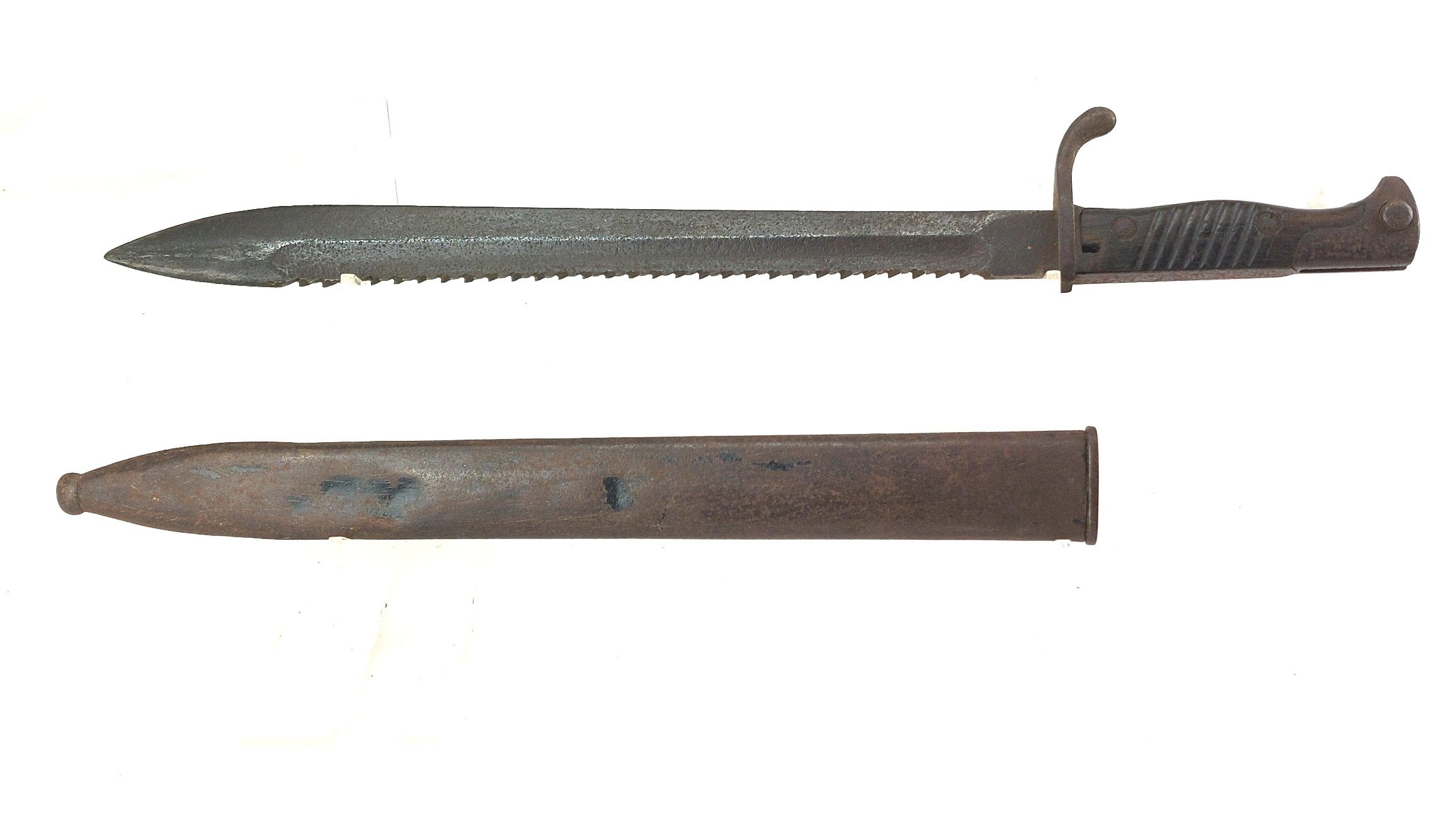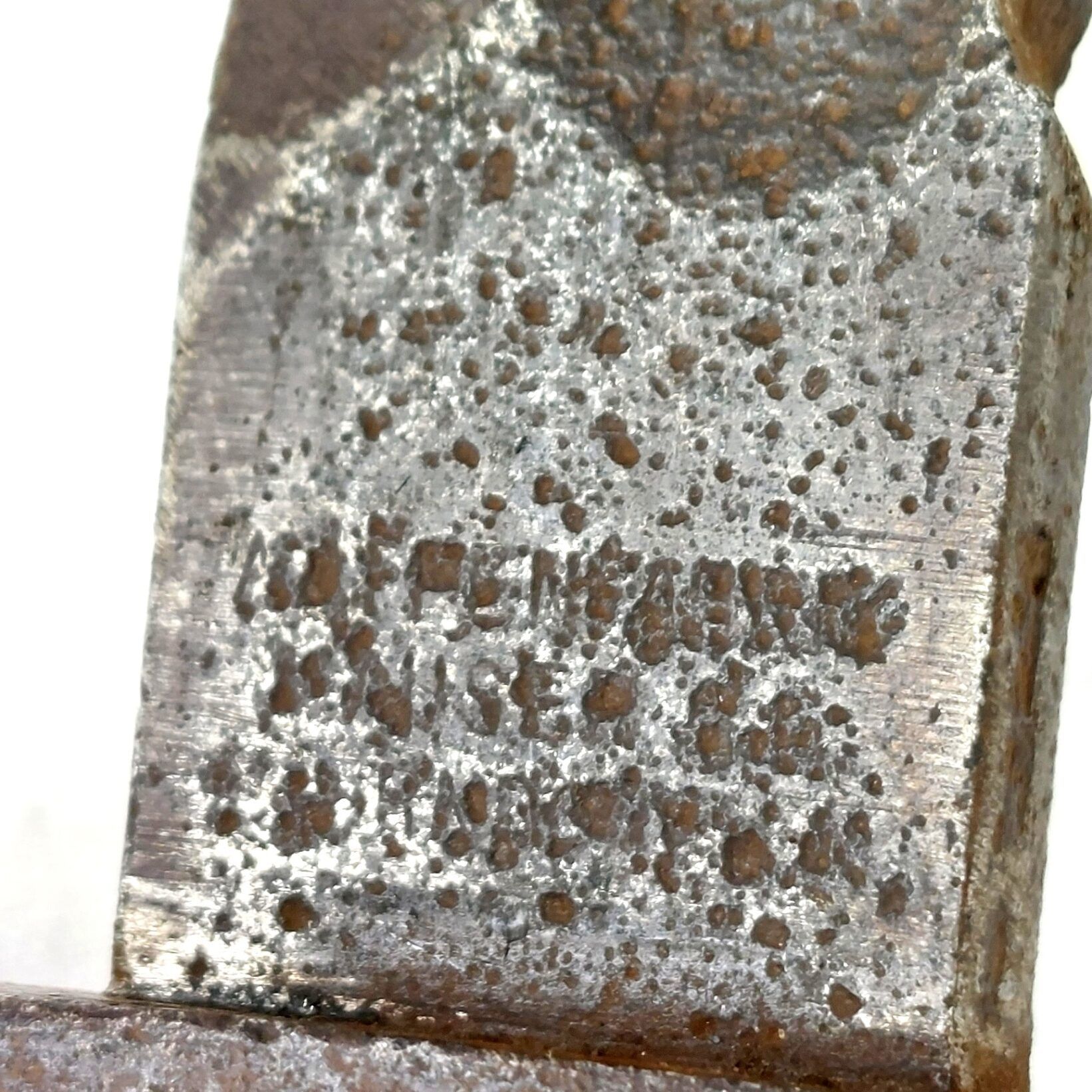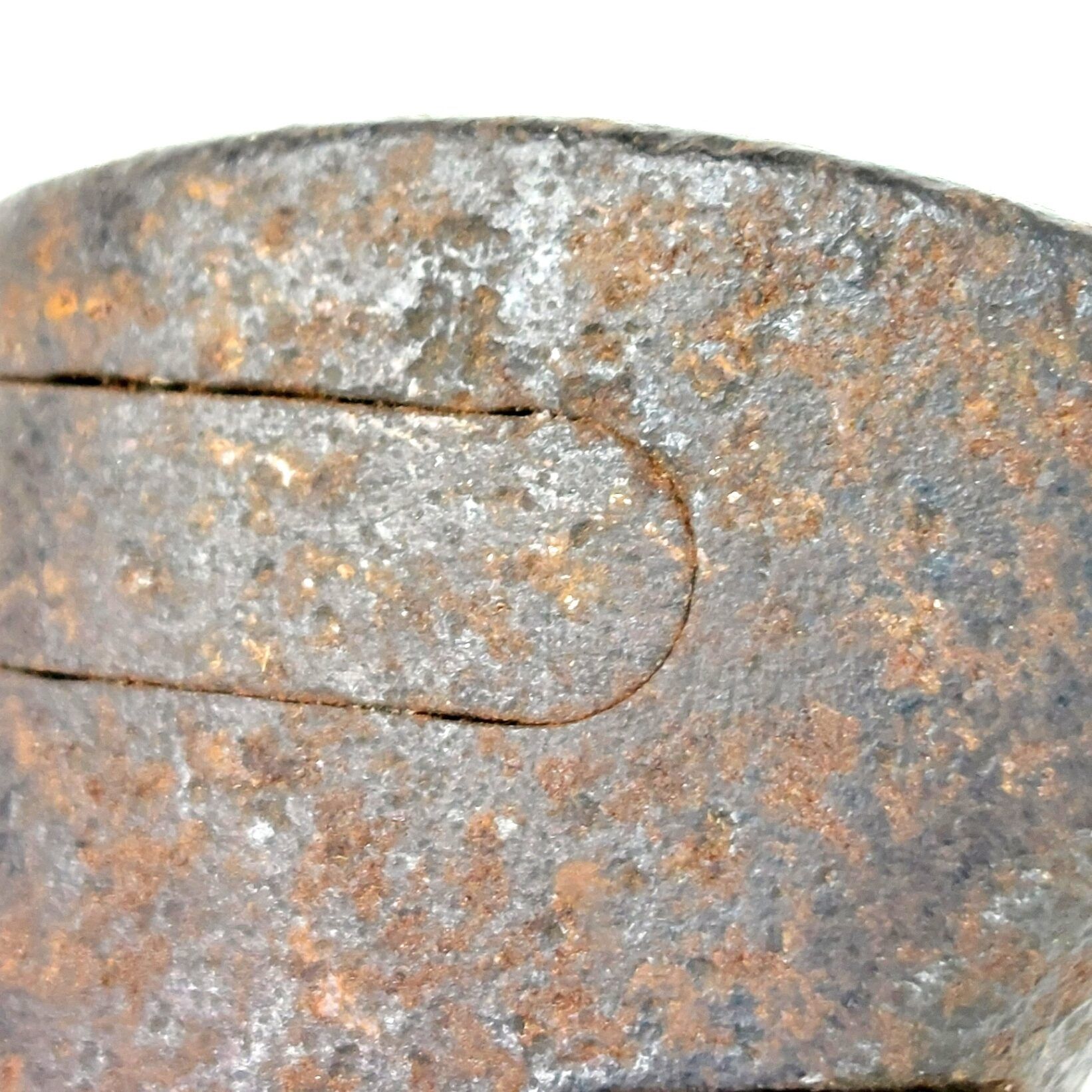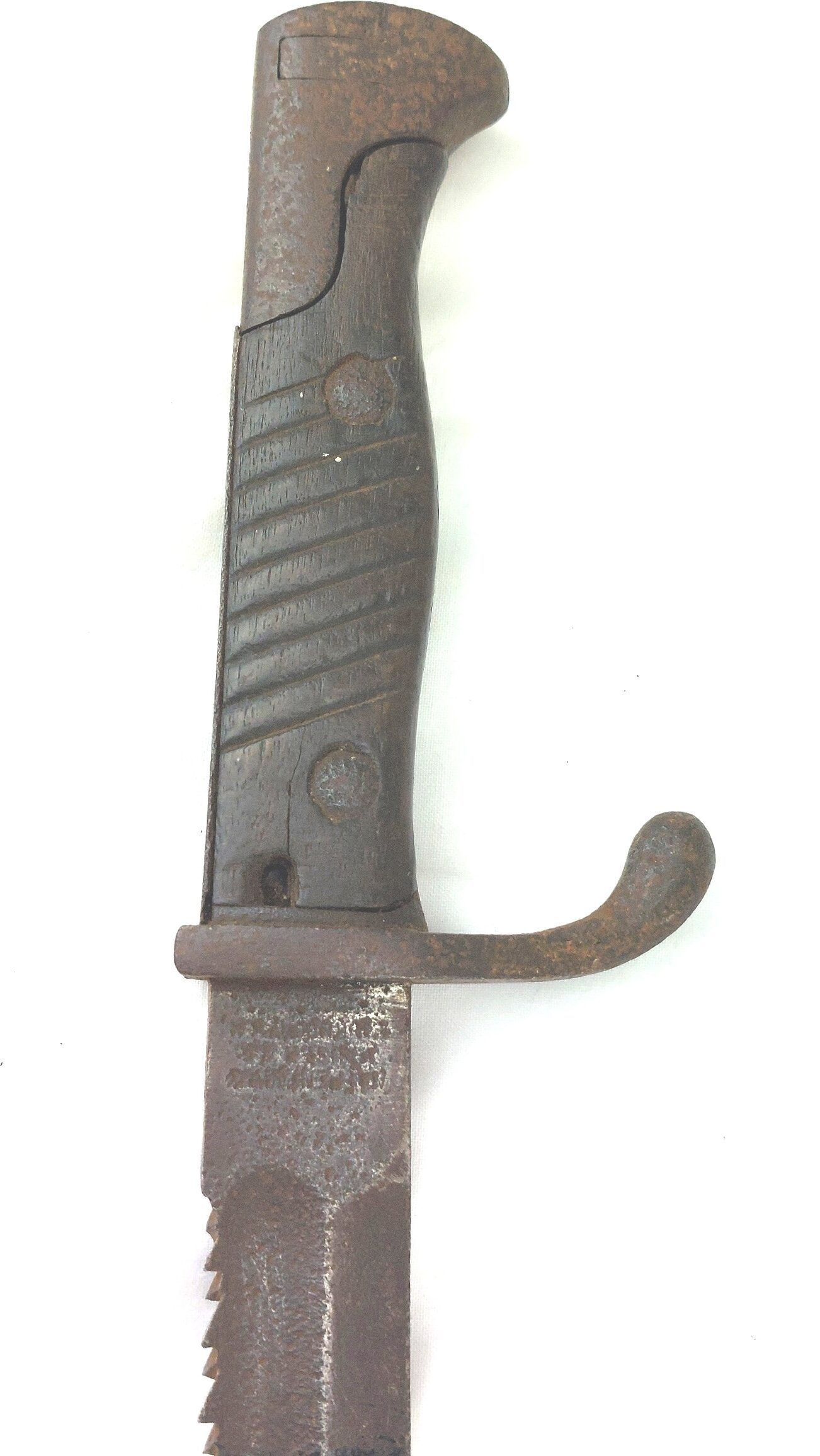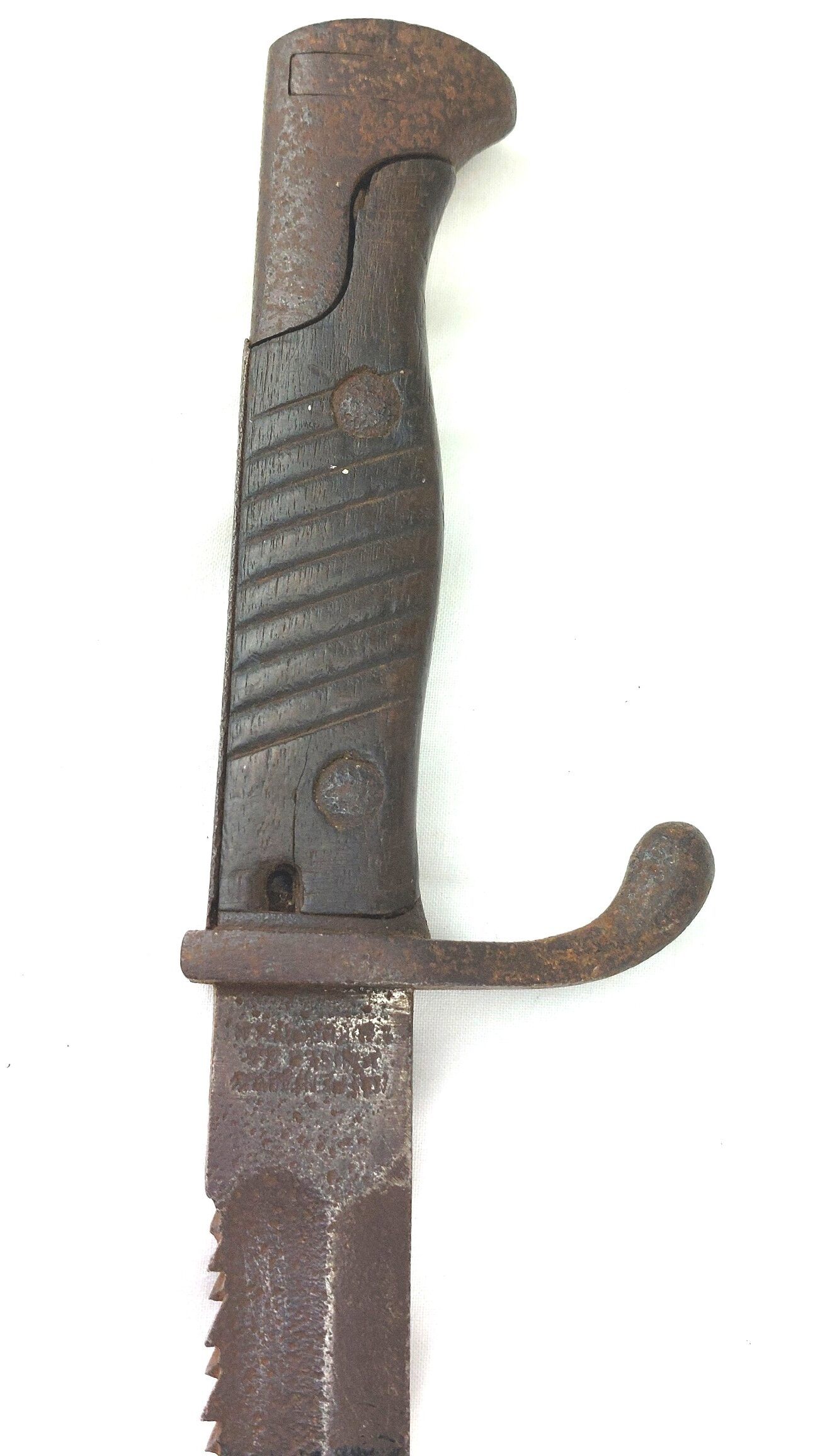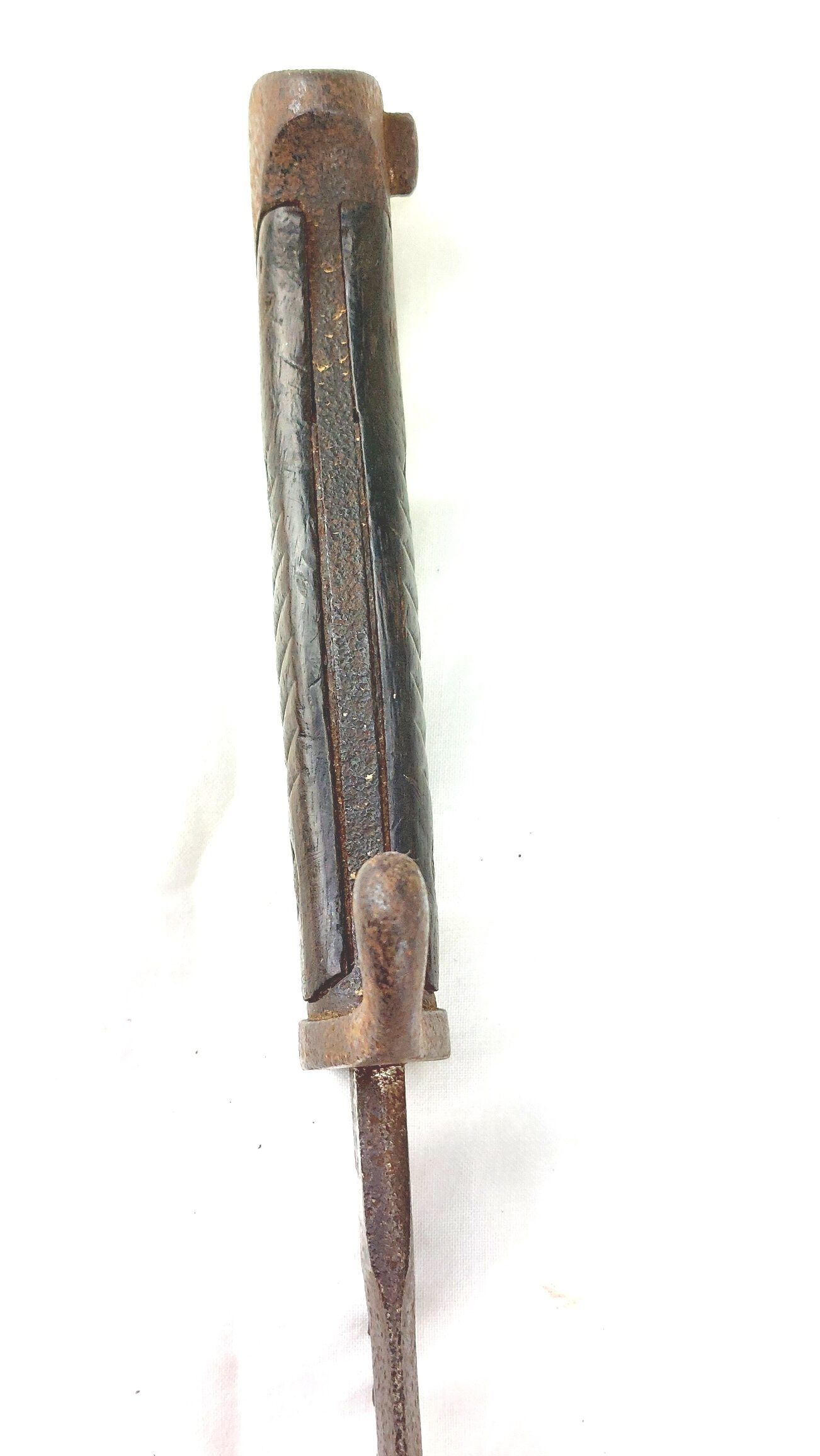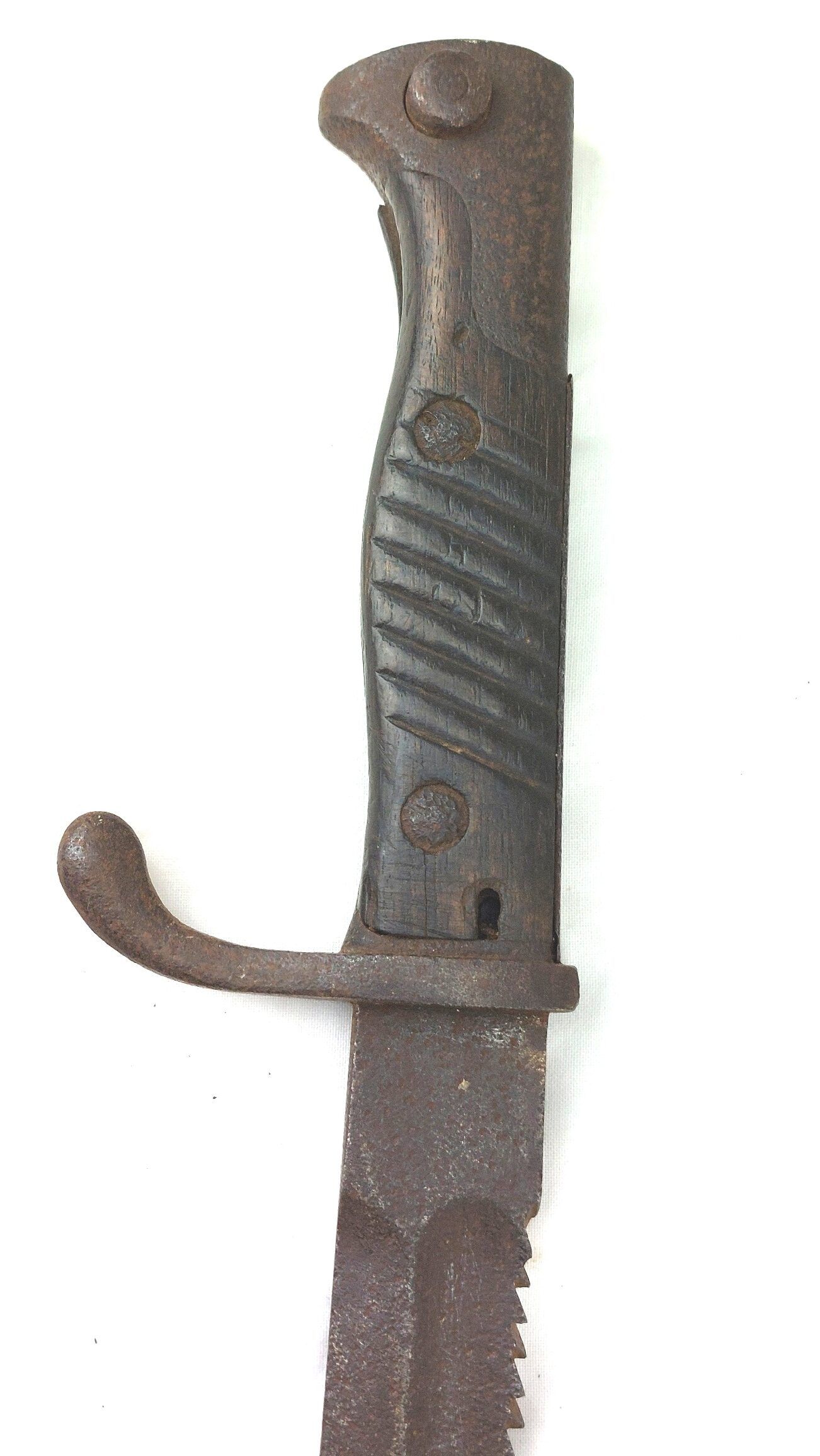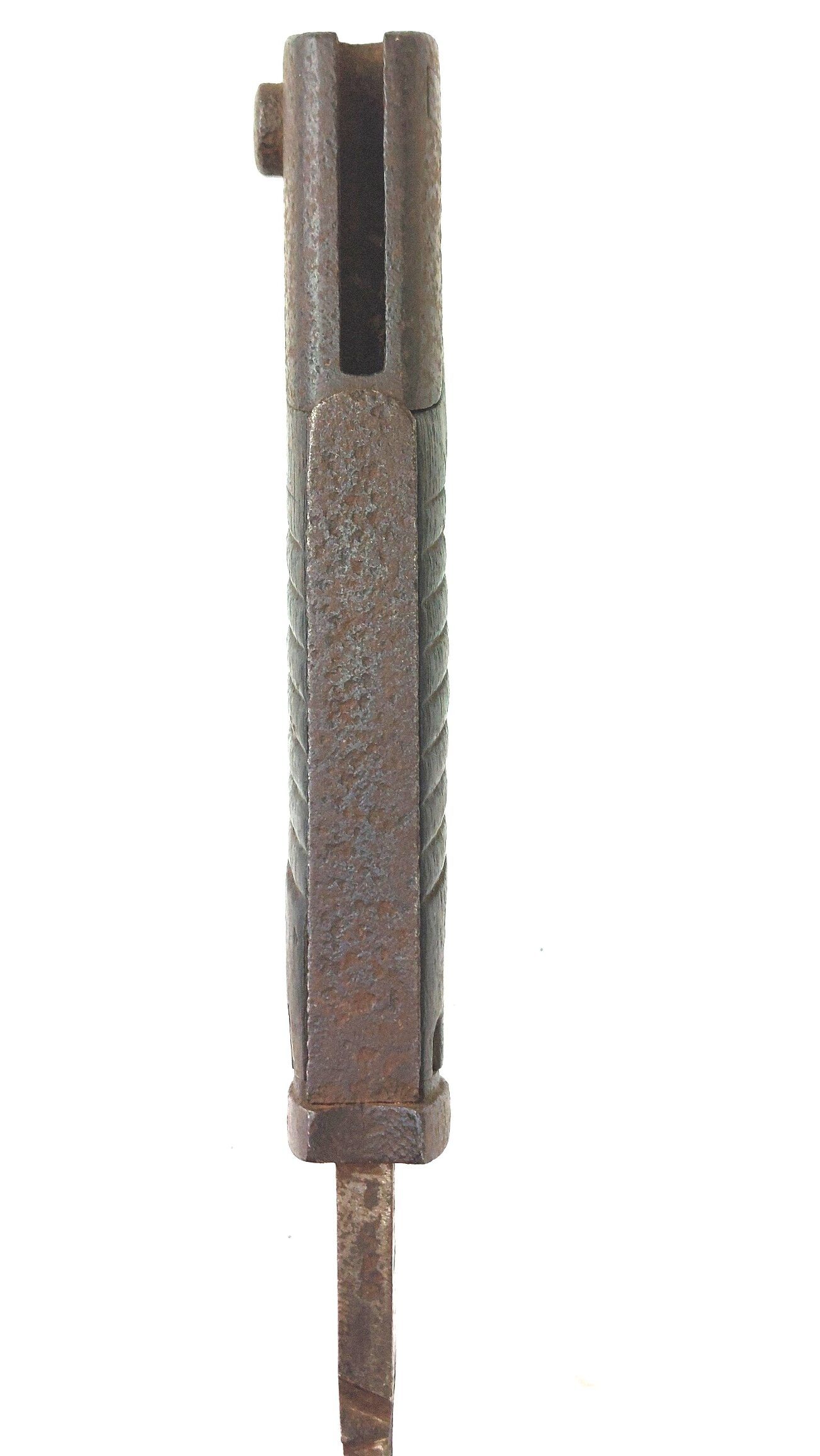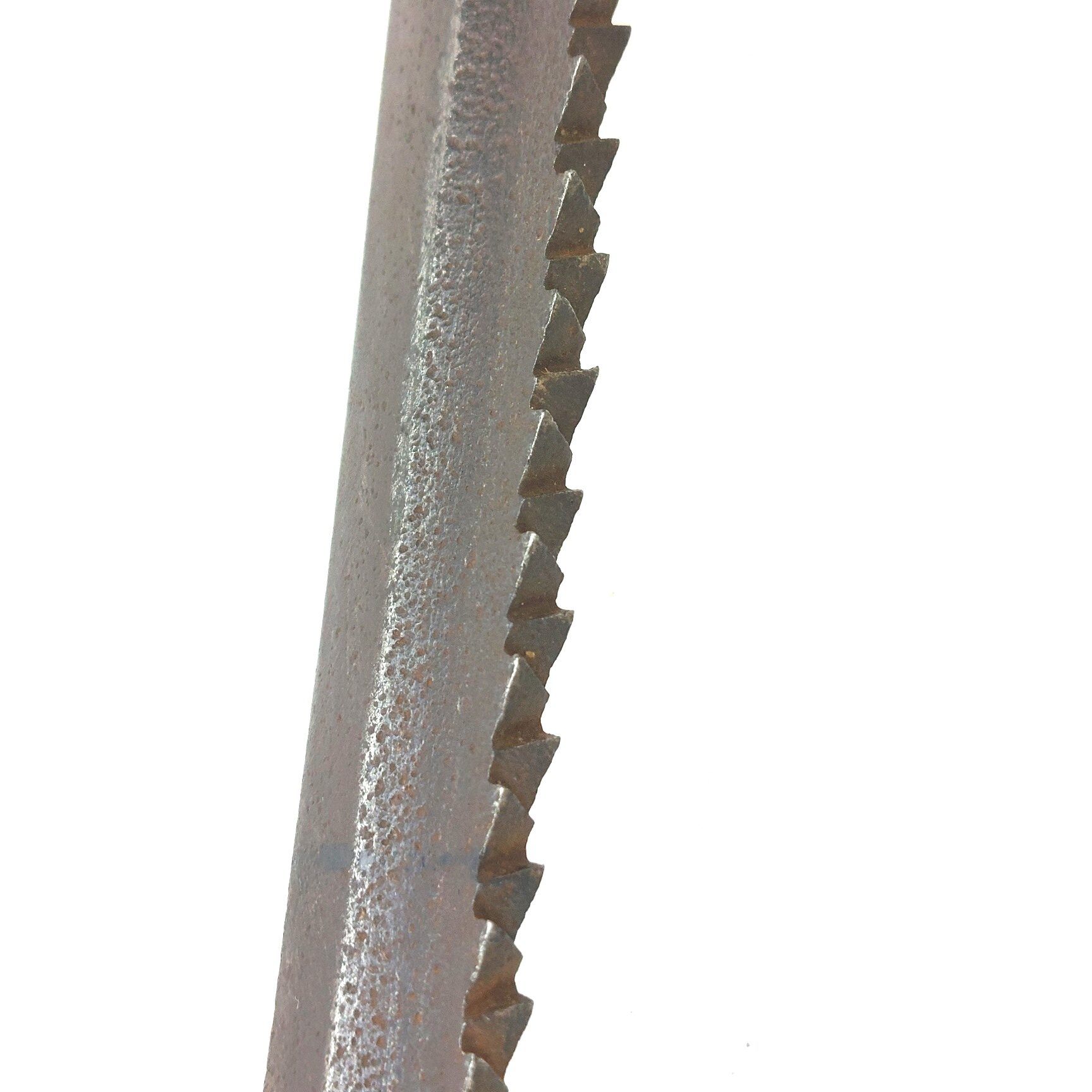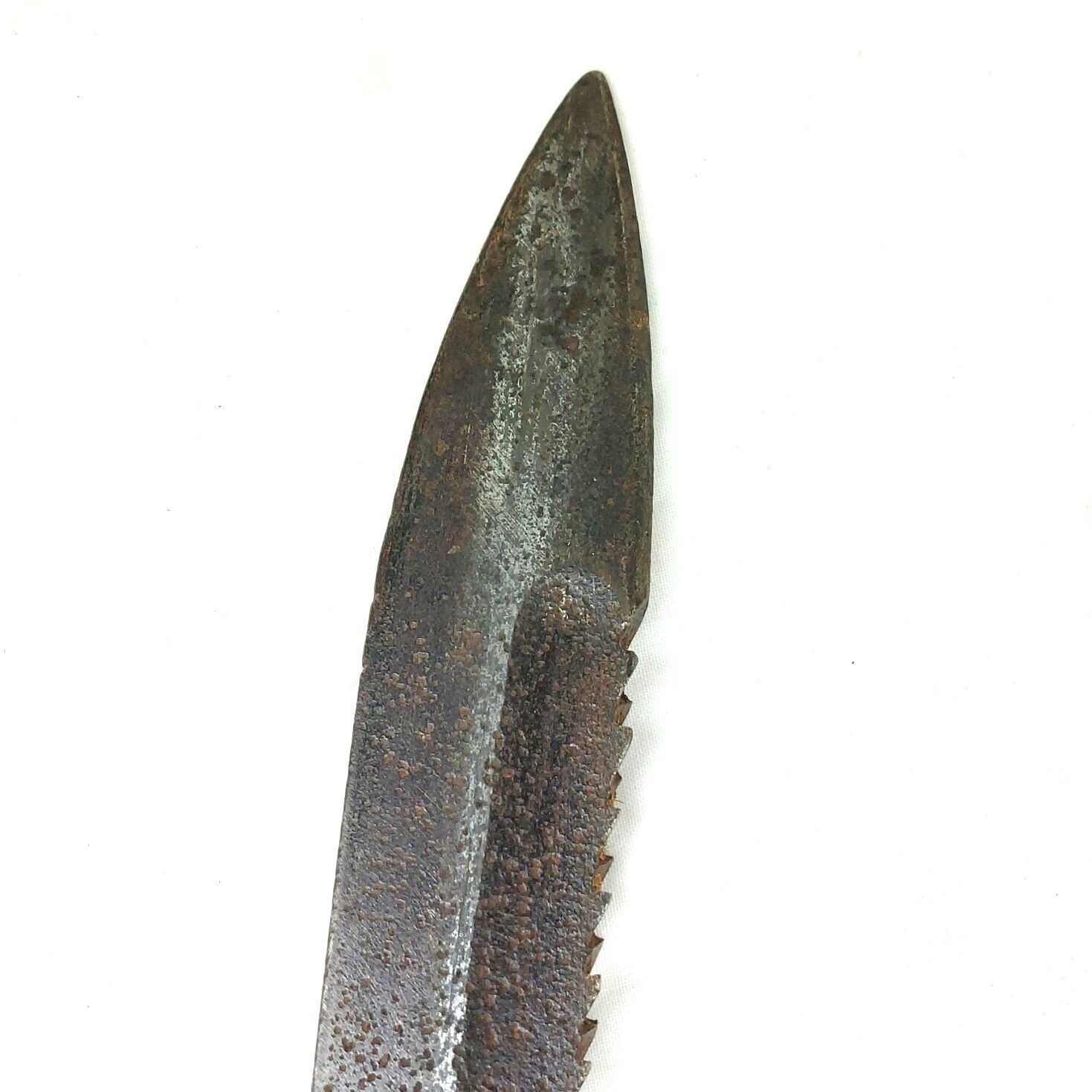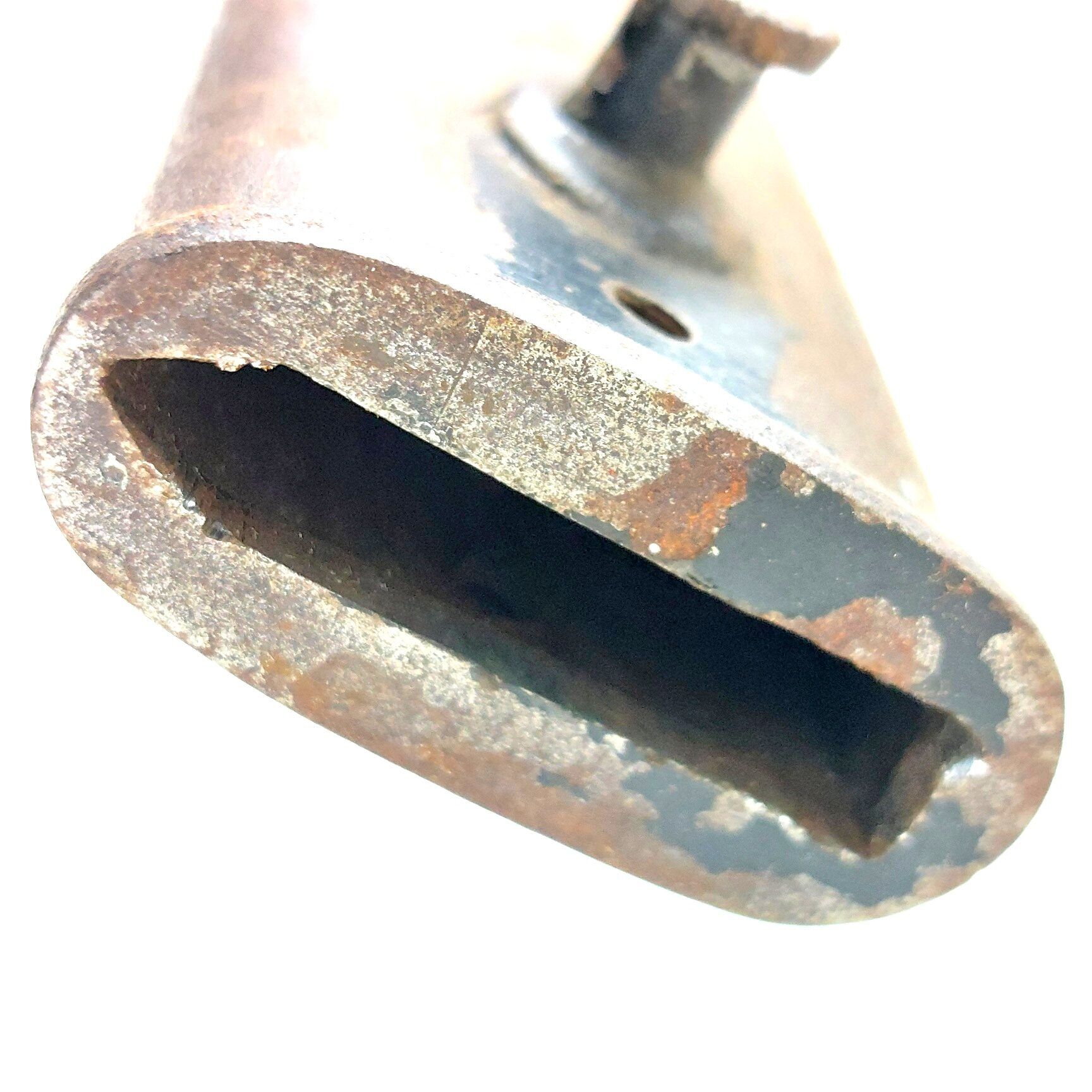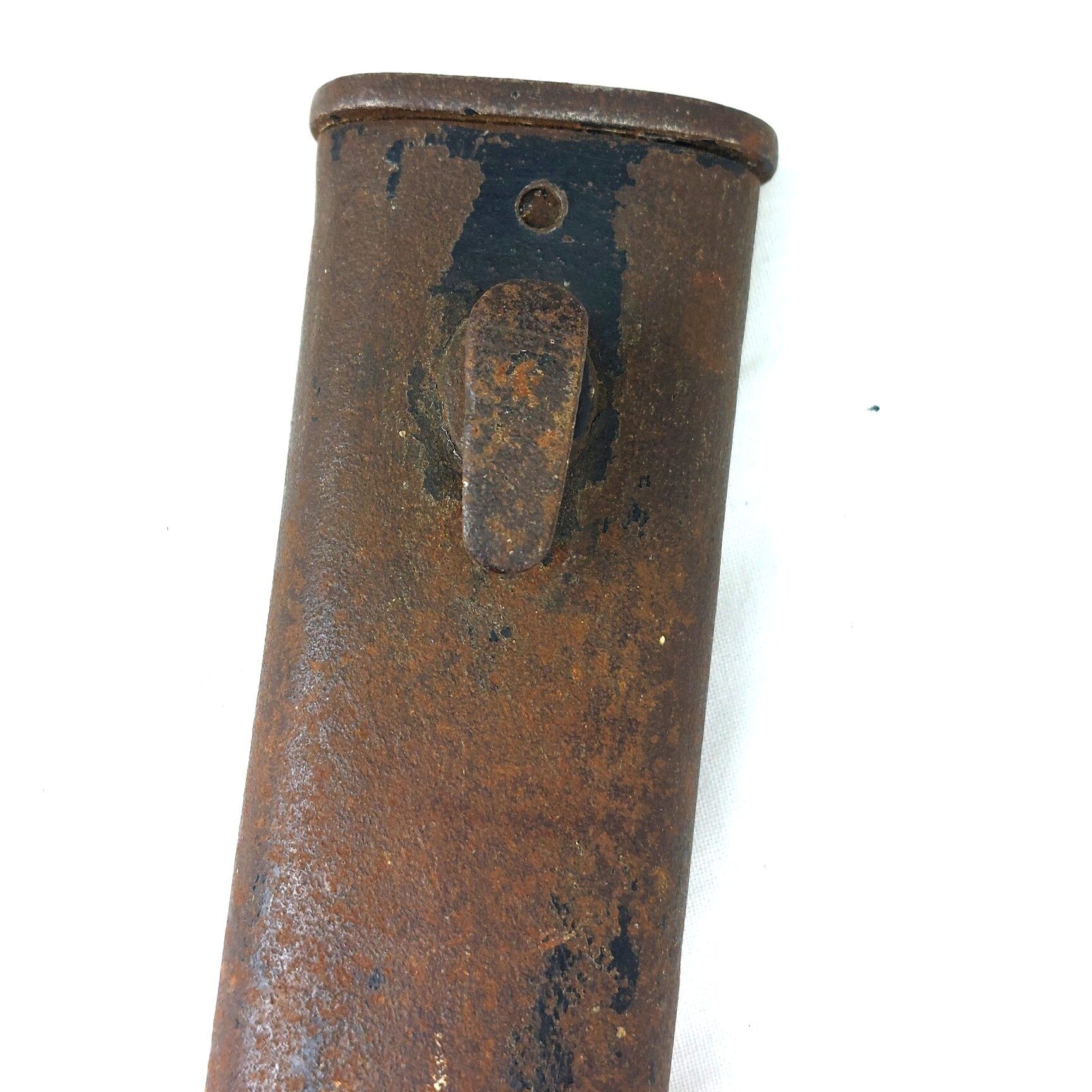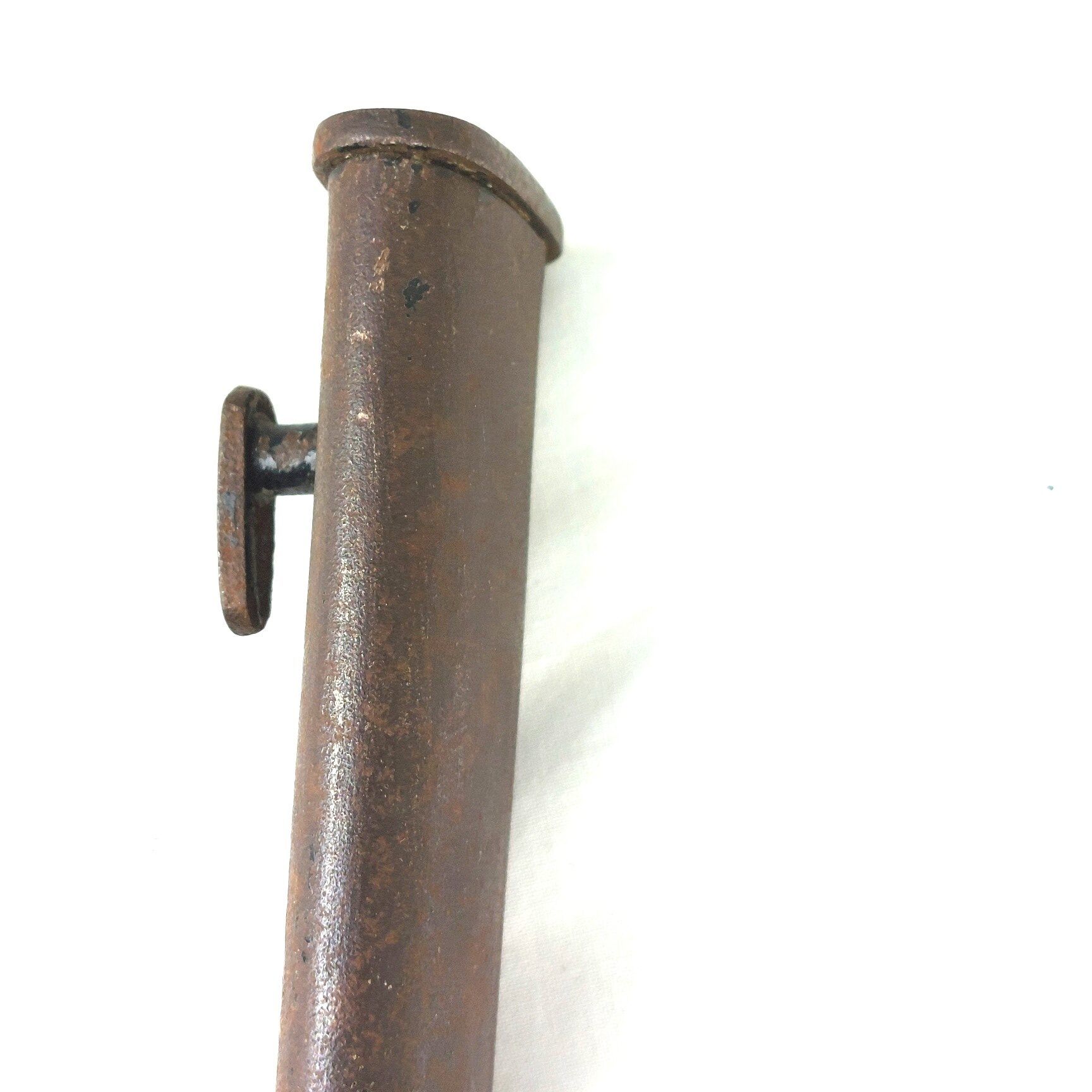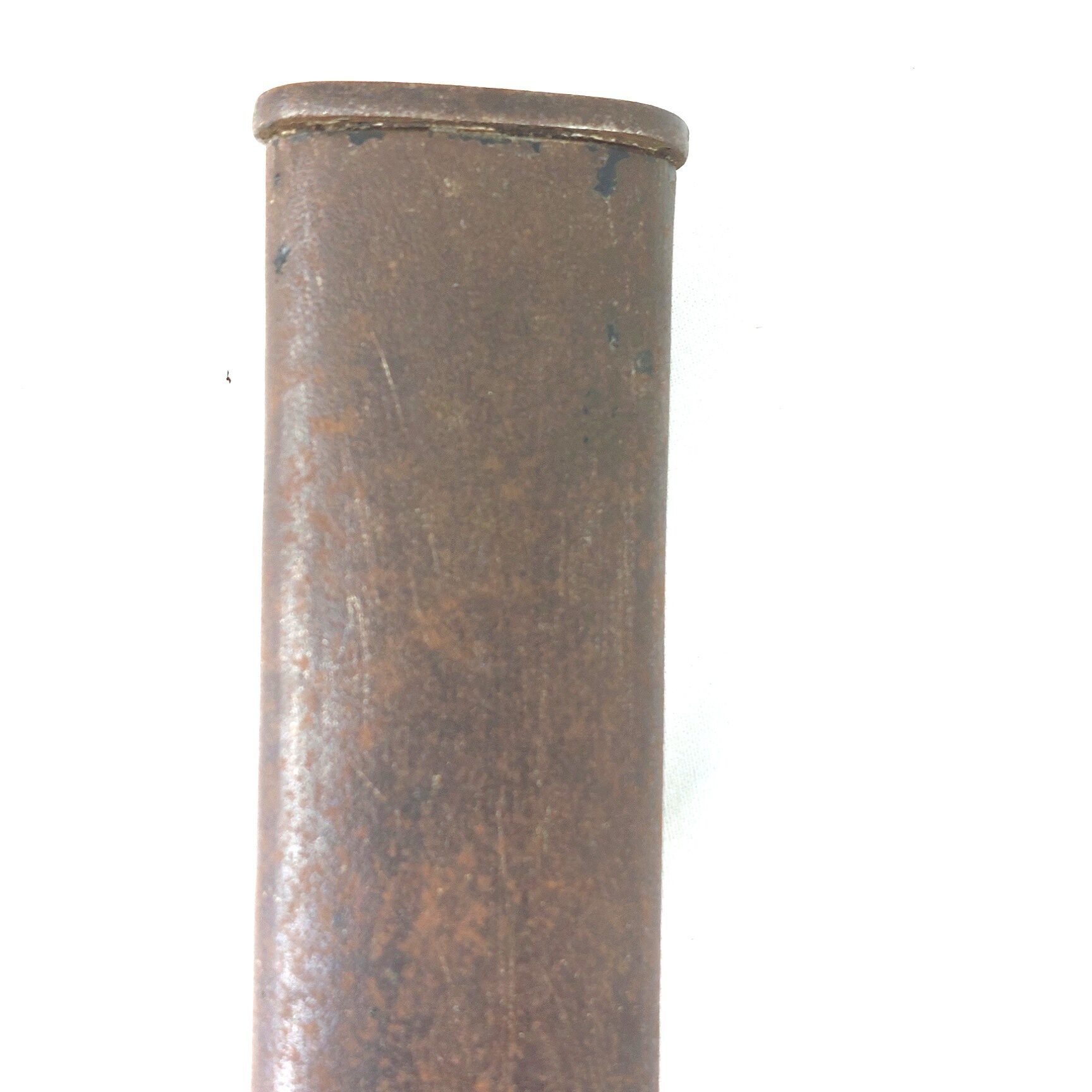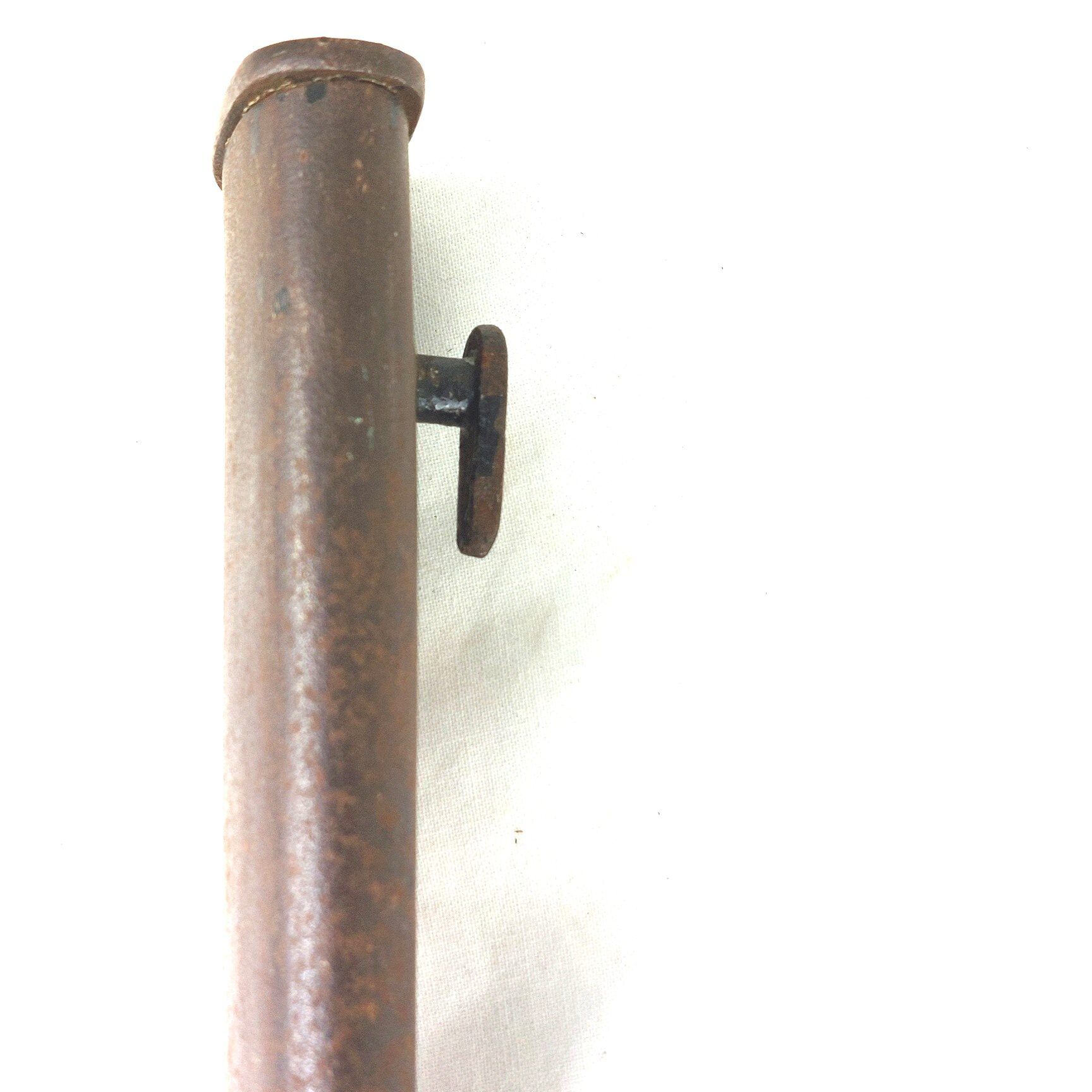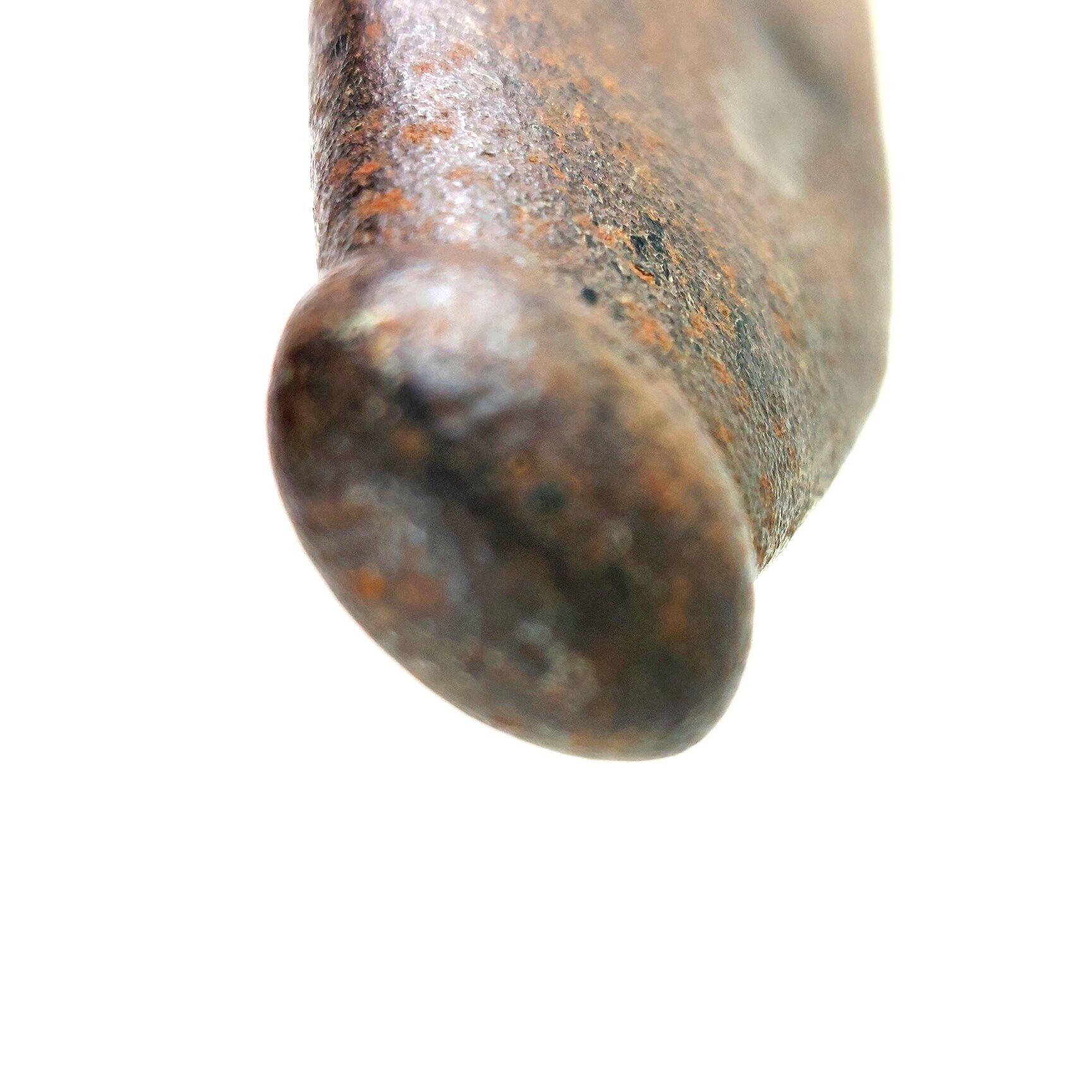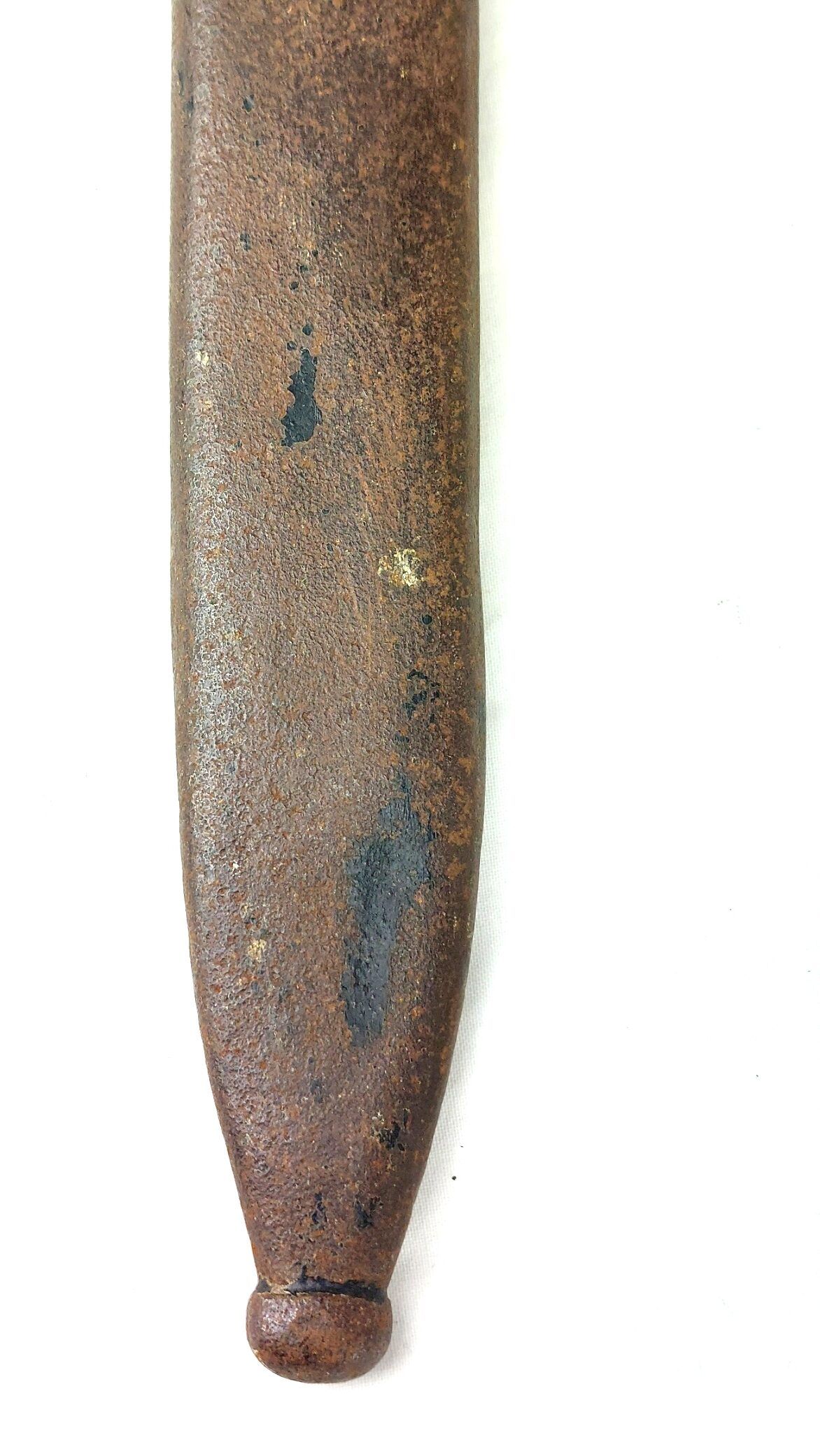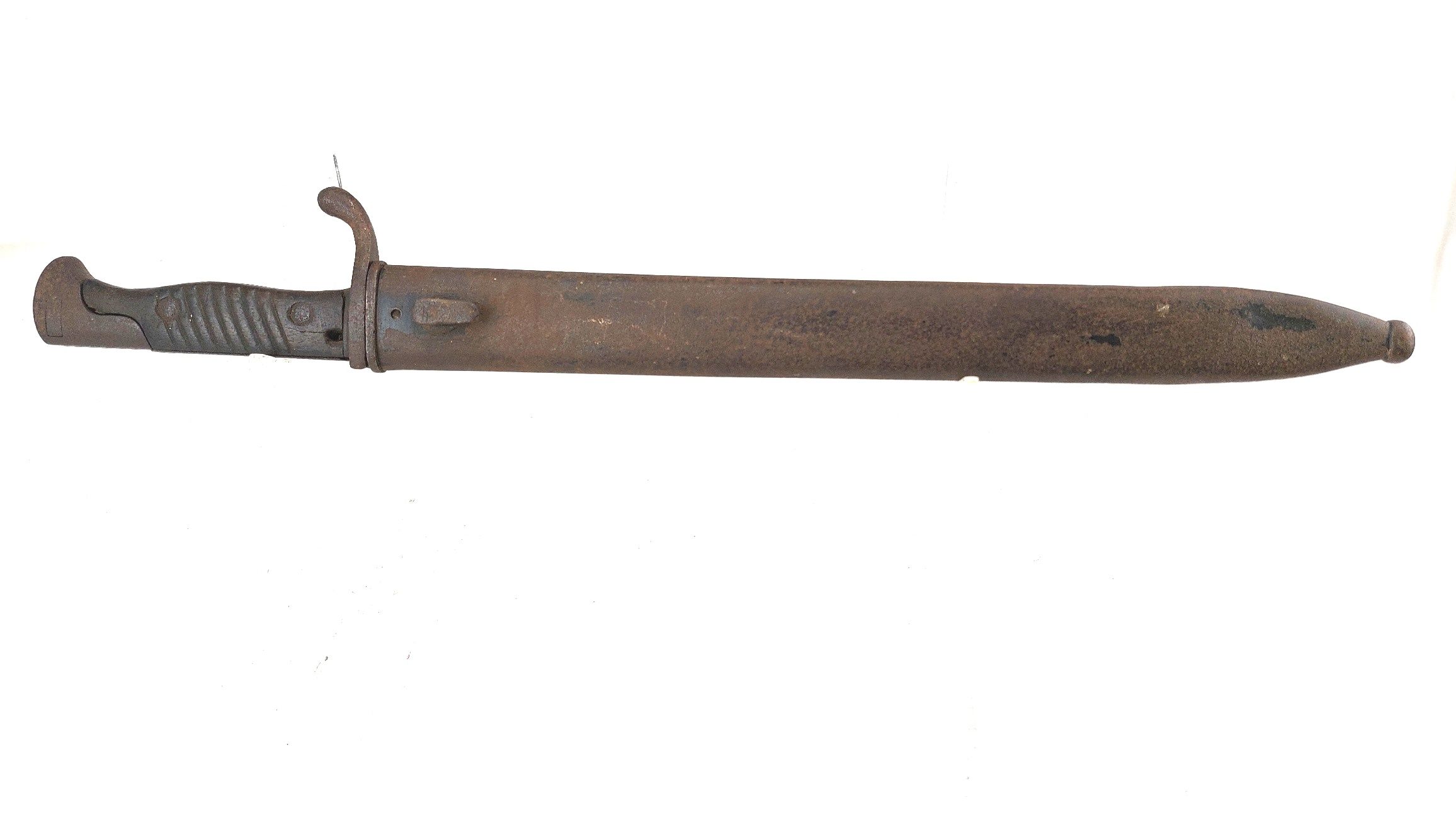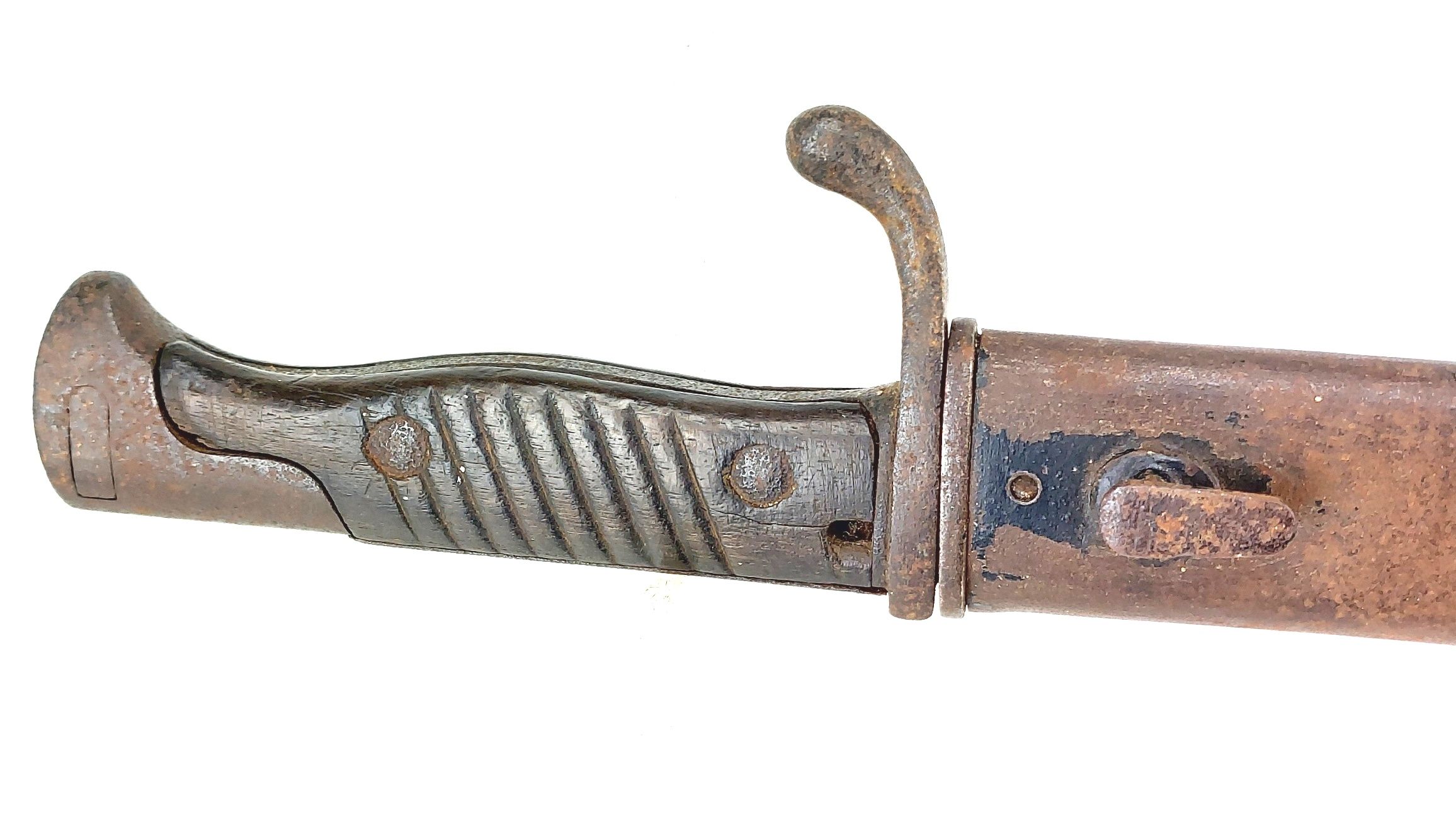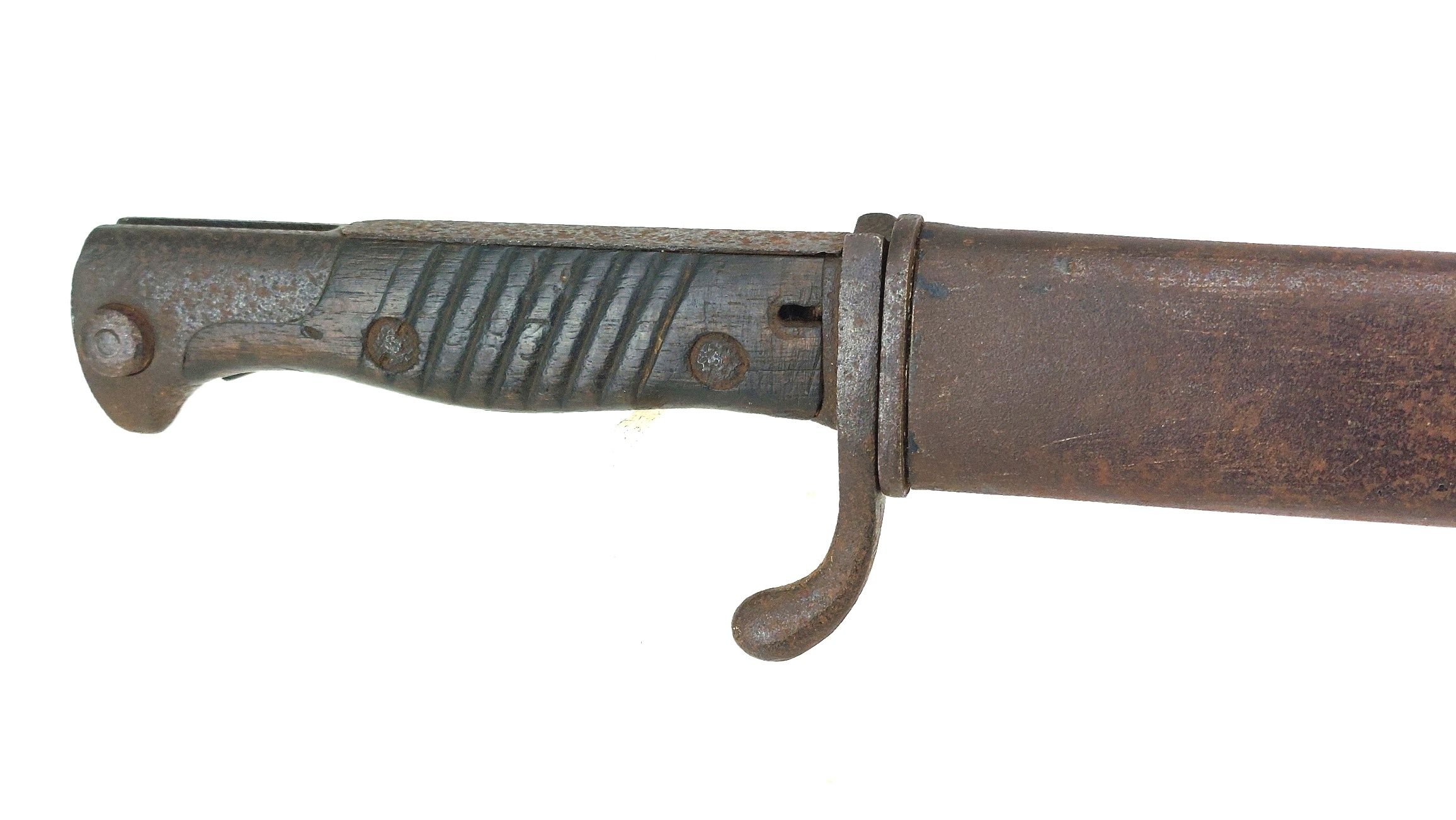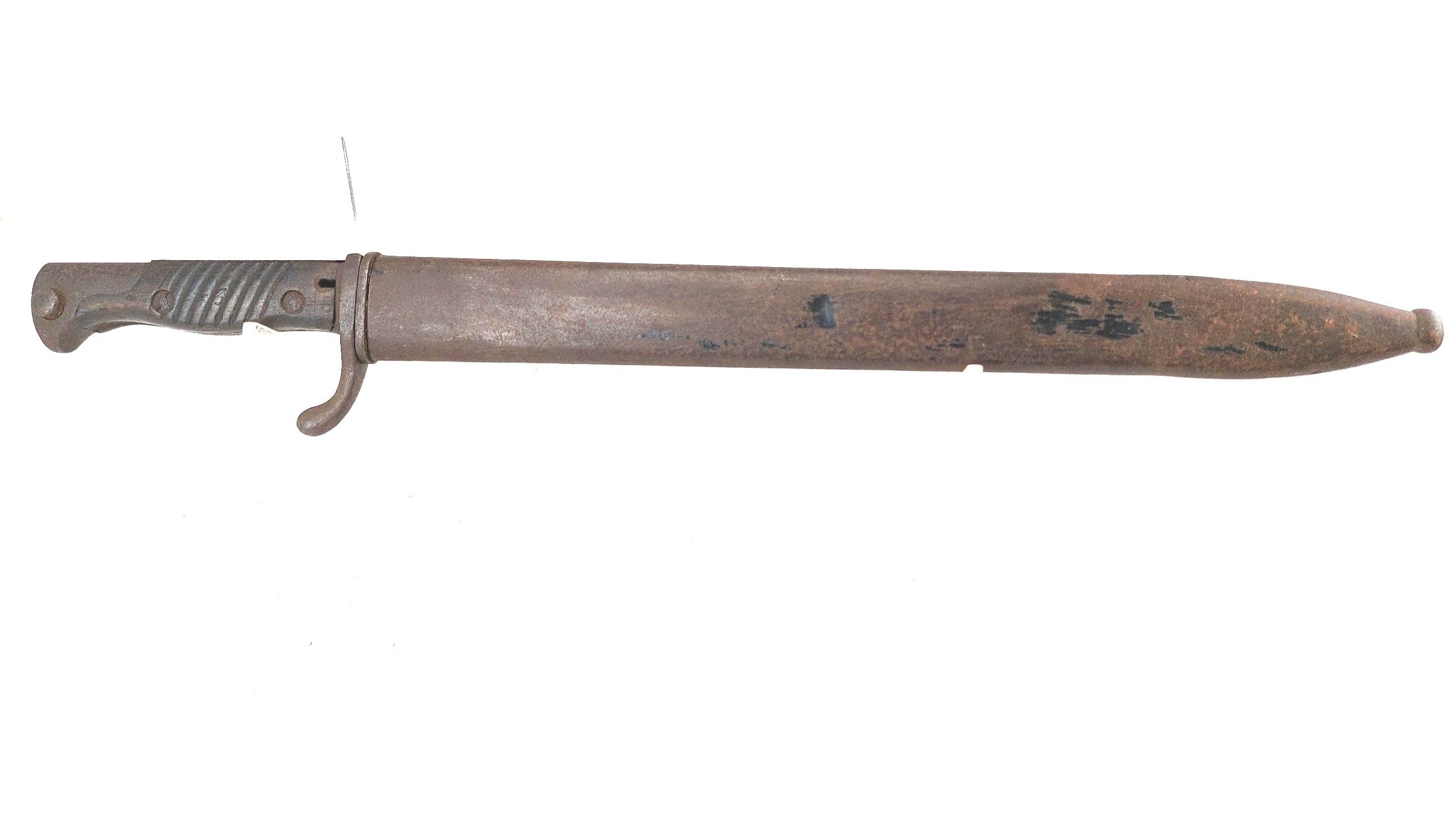*Imperial German, WW1, 2nd Pattern Model 1898/05 n/A Butcher Sawback (Mauser Gew 98) Bayonet & Scabbard, Made by Waffenfabrik Mauser AG, Oberndorf Am. Neckar*
Approximate Measurements: 36.5cm blade, 49.7cm overall
Marked on Ricasso: (Indistinct) Waffenfabrik, Mauser AG, Oberndorf a.N.
Marked on Spine: Indiscernible
Marked on Pommel: one fraktur proof marks
WW1 Imperial Germn Model 1898/05 Butcher sawback bayonet. Single edged blade widening to the point with rear sawback edge. The forte stamped over 3 lines (very indistinctly) – Waffenfabrik, Mauser AG, Oberndorf a.N.. The back edge with unclear issue stamps. Steel turn up quillon with wooden ribbed slab grips to the hilt and flashguard. Housed in its steel scabbard.
With its 14.5inch serrated blade, this is the infamous ‘Sawback Butcher’ bayonet as used by the front-line troops of the Germany Army during WW1. Contrary to popular mythology these were not intended to be fighting bayonets.
The sawback bayonet was designed for use with the 8mm Gewehr 98 bolt action Mauser Rifle, being one of the main service rifles of the German Army pre and post WW1. This is a second pattern example of the M1898/05 sword bayonet, known as the n/A (neuer Art = newer model). The second pattern lacked the first pattern’s vestigial muzzle ring (or ‘ears’) and had a flashguard. Only a small percentage of German bayonets were made with a sawback. They were only issued to noncommissioned officers or pioneer and machine gun troops to clear vegetation and other obstructions (much as U.S. machine gun crews used the various bolo knives and machetes). Sawback blades were also carried by non-commissioned officers (NCOs) as a symbol of rank. The sawback was phased out during the war due to negative Allied propaganda. On 2 July 1917 the Bavarian War Ministry suggested they be taken out of service while noting that there was no evidence that any soldiers captured with them had ever been mistreated. On 17 August 1917, Ludendorff reported that there was widespread fear among soldiers about being captured with them, and on 15 September 1917, the Prussian War ministry ordered that any in front line use should be replaced with non sawbacks. The Bavarians following on 17 October 1917. However, sawbacks continued in use among training, garrison, and occupation units and prison guards were issued with them. Finally, on 6 January 1918, the order was given to start removing sawbacks.
*Condition*
This has definitely seen some service and is rusted and pitted. Push button works well. Blade fits very nicely into the scabbard. Please see photographs as part of the condition report.
RQMBBEXDBE_6892183445


